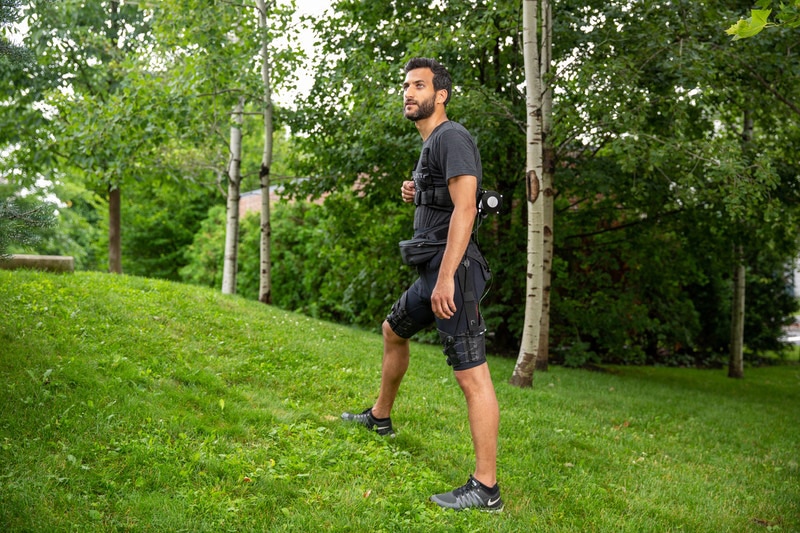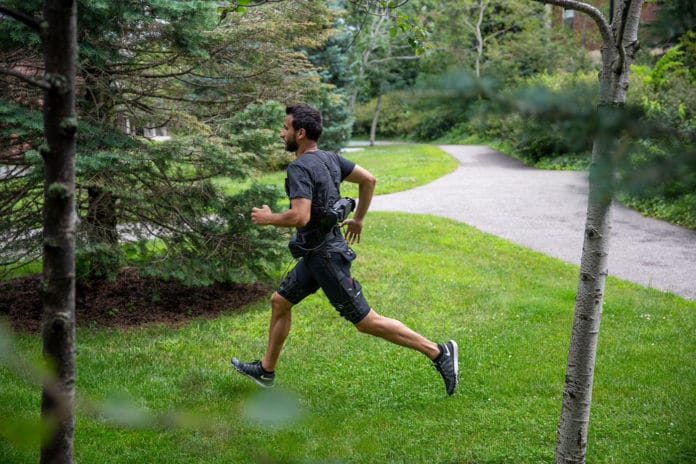So far, there are several exoskeletons or robotic devices that have been designed to help people with walking, and a few of them can assist with running. But until now, no untethered device has handled both gaits efficiently. The existing ones are mostly tethered and can assist either walking or running alone more energy efficient.
Now, researchers from Harvard University and the University of Nebraska Omaha have developed a flexible and portable exosuit that assists with gait-specific hip extension during both walking and running. Co-corresponding author Philippe Malcolm, Ph.D., Assistant Professor at the University of Nebraska Omaha and his team said that their device is the first one assists both – hip extension during uphill walking and at different running speeds in natural terrain.
The hip exosuit was developed as part of DARPA’s former Warrior Web program and has been years in the making.

Worn at the waist and thighs, this robotic exosuit is designed to work in concert with the gluteal muscles by generating an external extension torque at the hip joint. It assists the wearer via a cable actuation system. A mobile actuation system is attached to the lower back, which uses an algorithm that robustly predicts transitions between walking and running gaits.
At a weight of just 5 kg (90% of its weight located close to the body’s center of mass), the team’s hip-assisting exosuit is designed to be simpler and lighter weight compared to their past multi-joint exosuit.
The suit uses sensors on the torso to detect whether the wearer is walking or running, while sensors on the thighs detect changes in leg position. A motor unit on the back starts pulling actuators (cables) just before the wearer’s front foot hits the ground, which in turn aids body’s natural hip extensors and reduces the amount of energy spent to generate the same force. The cable goes slack when the back leg is moving forward while walking or running.
In the treadmill-based indoor tests, hip-assisting exosuit reduced users’ metabolic costs of walking by 9.3% and of running by 4% compared to when they were walking and running without the device, researchers wrote in the paper published in Science.
“This breakthrough study coming out of the Wyss Institute’s Bioinspired Soft Robotics platform gives us a glimpse into a future where wearable robotic devices can improve the lives of the healthy, as well as serve those with injuries or in need of rehabilitation,” said Wyss Institute Founding Director Donald Ingber.
Journal Reference
- Kim, J., Lee, G., Heimgartner, R., Revi, D. A., Karavas, N., Nathanson, D., Galiana, I., Eckert-Erdheim, A., Murphy, P., Perry, D., Menard, N., Choe, D. K., Malcolm, P., & Walsh, C. J. (2019). Reducing the metabolic rate of walking and running with a versatile, portable exosuit. Science. DOI: 10.1126/science.aav7536
